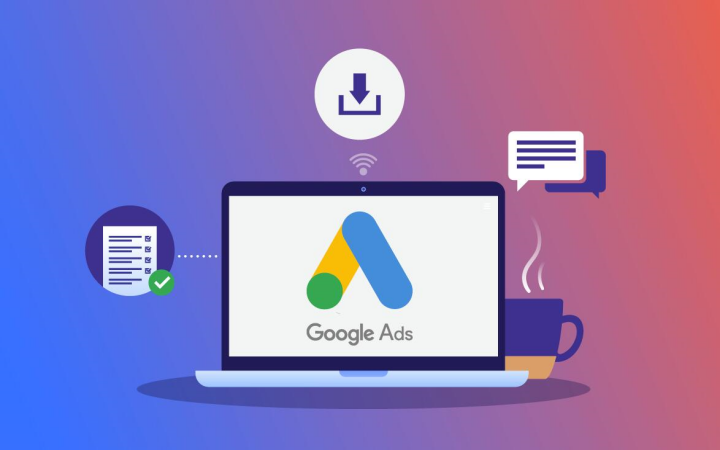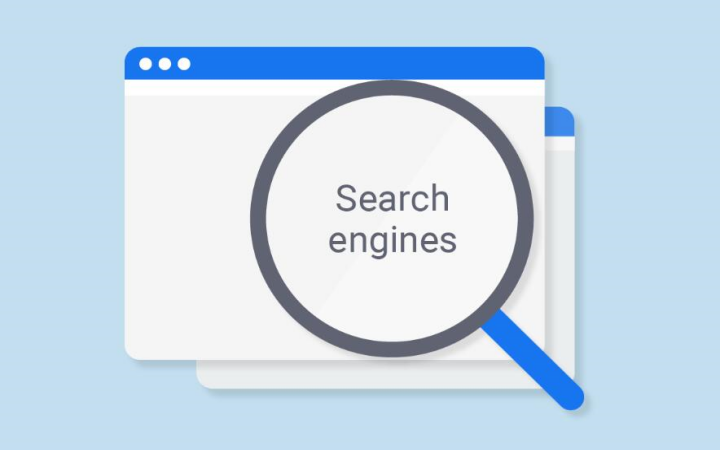Online marketing is a fast-evolving dynamic space where staying updated with current trends and standards is crucial for success. One important aspect that digital marketers and small business owners should not neglect is the optimization of Google Display Ad Sizes. With 2024 ahead of including new visual content handling dynamics, awareness of the right size of ads and implementing them can substantially leverage your campaign in terms of reach and effectiveness.
This blog post provides you with an in-depth review of the top ten Google Display Ad Sizes for 2024, furnishing discoveries and necessary pieces of advice to strengthen your advertising potential to the max.

Understanding Google Display Ads
Google Display Ads are visual advertisements that are visible on numerous websites, including news pages, YouTube, and Gmail within Google Website. However, display ads reach users looking through different sites. The search ads we can see on the search engine results page are not like display ads that reach users who browse other sites.
As a result of selecting the proper ad size, the effectiveness of the campaign will be enhanced. The size is directly related to the position of the ad, allowing for a more engaging visual experience and, ultimately, helping with your marketing goals. That way, the ad can be smoothly added in a way that does not disrupt the site experience of the visitor. After all, the latter part is to balance the user consequently.
Importance of Choosing the Right Ad Size
One of the key factors ensuring the success of your campaign is making the right selection of the ad size. Regardless of any differences in ad size, each piece of advertisement responds differently on various devices or platforms. For example, certain sizes may work better on mobile devices, while others are more fit for desktops. By identifying the ad sizes that are the most efficient vis-a-vis the target audience, you can get the most effect and entanglement.
Benefits of Selecting the Right Ad Size:
- Enhanced Visibility: Larger ad sizes are usually more eye-catching and contain more space for impactful messages, which is a great benefit for them.
- Improved Engagement: The potential customer is more likely to act on what they have seen if the size of the ad is optimized for their particular devices.
- Better Conversion Rates: Conversion rates generally go up when ads are adjusted to the campaign they are displayed on.
Most Common Google Ads Display Ad Sizes
The first step to implementing a successful advertising strategy is to understand the most popular Google Display Ad Sizes. Advertisers consider these types versatile and capable of having a wide reach; thus, they are attracted to them.
300×250 – Medium Rectangle
Crafting the Medium Rectangle 300×250 ad is one of the things that have made desktop and mobile websites as popular as they are today. It has a slot that can be filled with a rectangular image or an ad that sits on the side of the page.
336×280 – Large Rectangle
The 336×280 Large Rectangle ad, being slightly larger than the Medium Rectangle, creates more room for the creative element. This ad location is utilized effectively for text-heavy advertising and is frequently used in tightly written text environments.
728×90 – Leaderboard
The 728×90 Leaderboard is among the most referred-paying banners in the display ad market. This is mostly present at the page’s outset. So, the fact that it will get the user’s attention is certain. This is a good side for the brand awareness campaign as well.
300×600 – Half Page
Half-page advertisements of 300×600 allow for better use of a wide range of features to build up the finished campaign. A truly good layout is a tall rectangle that can say a lot with a minimalistic design in one corner.
320×50 – Mobile Leaderboard
Considering mobile traffic exceeds desktop usage, the 320×50 Mobile Leaderboard has become more of a necessity for targeting mobile device users. It is a compact solution that fits perfectly either at the top or the bottom of mobile screens.
160×600 – Wide Skyscraper
It is important to note that Wide Skyscraper 160×600 is best suited for thin spaces. The format of the ad is narrow and long, which makes it a good option for sidebar placements. Furthermore, it becomes visible again because of its vertical direction when users scroll.
468×60 – Banner
Often overlooked, the 468×60 Banner is still a great option for horizontal banners as it’s light and can be a very good fit for smaller web pages.
250×250 – Square
The 250×250 Square ad size is so versatile that it can be placed nearly anywhere. Its mini version can even be the best choice for catchy sidebars and footers on different pages.
200×200 – Small Square
Just like the 250×250 Square, the 200×200 Small Square is another mini version that is great for tight spaces. It’s a good idea to apply this solution on mobile sites with heavy content pages.
970×90 – Large Leaderboard
The 970×90 Large Leaderboard is a wide leader compared to the regular Leaderboard, as it has so much space for furthering means of compelling visuals and messaging. It’s the most effective on high-resolution displays.
Most Popular Google Display Mobile Ad Sizes
Mobile devices have become the main conduit of internet traffic in many industries across the world, taking over from computers. Thus, it is vital to know about the sizes of ads that will be specifically used for mobiles.
Here are some mobile ad sizes for the year 2024:
- 320×50 – Mobile Leaderboard: Most popular among mobile web display ads; however, a bit intrusive, it’s a well-balanced combo of visibility and non-intrusiveness.
- 320×100 – Large Mobile Banner: A larger type of mobile ad that is more eye-catching and, therefore, a better attention grabber of your content than the smaller version.
- 250×250 – Square: A square-shaped, creatively designed ad format may prove more effective, though less common, in some places.
- 200×200 – Small Square: It doesn’t matter that it’s a small size of the ad; it will still be a good fit in most ad slots.
- 300×250 – Medium Rectangle: The Rectangle format is the best for any visual advertising. It is also rather popular in the mobile sector, as compared to the rest of the selections.
Most of the sizes are good, but choosing the appropriate ones depends on the user’s behavior and the nature of the content. Examination of performance data would be useful for selecting the sizes that work most efficiently for your campaigns.
Best Performing Google Ads Display Sizes
The top performers across multiple campaigns that have been in session for many years are as follows:
- 728×90 – Leaderboard: It keeps on performing due to its prime placement at the top of the pages.
- 300×250 – Medium Rectangle: Still, it serves as a flexible and efficient size both for desktop and mobile.
- 160×600 – Wide Skyscraper: In addition to drawing a lot of attention through the vertical rectangles, which are usually found on the right or left margin of the page, this ad type can also be displayed.
- 300×600 – Half Page: A large size allows for more explanations and increases customer engagement.
- 970×250 – Billboard: This type of ad provides content that may incorporate drawings or images that move interactively and change with time, interspersed with other ads.
These ad sizes usually lead to better engagement and returns, but continuous testing and optimization are necessary to find the right combination for your particular needs.
5 Must-Have Display Ad Design Tips
Creating an attractive ad design is more than just the choice of the right size. Here are five essential tips to optimize your ad performance:
- Clear CTA: Your call-to-action (CTA) should be eye-catching and convincing. Incorporate different colors and direct language that can lead to clicks.
- Consistent Branding: Your advertising’s design has to be the original visual extension of your unique brand. Consistency is what builds the connection and trust with the audience.
- Balanced Layout: A balanced mixture of images and texts should again be your target. Over-texting in the ad is a sure way to confuse and discourage users.
- High-Quality Images: Use sharp and vibrant photos that can create a connection between your audience and your brand. Image-quality problems will overshadow your point.
- Test Variations: The A/B split tests show different designs and messages to your audience and determine which is the most appealing to them. Progress means a lot when it comes to success.
Factors to Consider When Choosing Ad Sizes
You’ll want to focus on several necessary details, such as:
- Target Audience: The preferred ad sizes can be identified from the preferences and activities of your clients.
- Platform: The ideal ad sizes may vary on different platforms. Thus, you must ensure that the ad sizes you want to use will be compatible with the platforms you will use for your campaign.
- Campaign Goals: Are you concentrating on brand awareness, conversions, or creating brand engagement? The purpose of the ads that you will select will depend on your set goal.
- Device Usage: Valuable video ads for mobiles or desktops? Do you think your audience prefers finding it on one device more than on the other? Remember that this will determine the right ad format.
Best Practices for Implementing Google Display Ads
To ensure the effectiveness of your Google Display Ads, develop your campaign by strictly following the best practices below:
Creating Engaging Ad Content
- Visual Appeal: It attracts the attention of the consumer by using bright colors and high-resolution images.
- Clear Messaging: Write your ad copy in a way that is short but yet still communicates the value proposition quickly.
- Call to Action (CTA): Also, get them to a landing page where users can get more information about your campaign and be engaged more.
Targeting the Right Audience
- Demographics: Your options are targeted by markers of, for instance, age, gender, hobbies, or occupation.
- Retargeting: Re-implement forgotten-its strategies to attract users who have in the past interacted with your brand through your provider.
- Placement Targeting: Bear in mind not only this idea of presenting this material on the page but also your own goals regarding the content.
FAQs
What is the most effective Google Display Ad size?
An ad’s effectiveness is contingent on the target market of the advertiser and the display strategy of the placement. One of the 300×250 part rectangles is well known as one of the most efficient due to its multimode nature and cross-platform usage (desktop and mobile, respectively).
How can I maximize the reach of my Google Display Ads?
The best solution for the pursuit of the biggest reach is to mix universally known ad sizes that the Google Display Network includes in its vast inventory. Also, the applicant should choose to target some other options such as demographics, interests, and remarketing to enhance focus on the very people.
Are larger display ads always better?
Only some of the time. Even as bigger ads lead to more eye-catching ones, they might need to fit into lesser space on a web page or display on mobile devices. The combination of size, ad placement, and user experience is important in giving the best outcomes.
Can I use animated ads on Google Display?
Yes, Google Display Network allows you to use animated ads. However, it is advised that the animation is smooth, does not pull attention away from the message, and fully satisfies Google’s regulations.
Wrapping Up
In 2024, Google Display Ad sizes will be the key to the improvement of your ads. To succeed in different platforms and devices, the sizes of which are the most successful, you should build the most effective campaigns. The ability of your advertising to attract the audience comes from how you use them. In other words, from the correct sizes and the way you employ them to present intriguing and inspiring content.
You should be running your ads online sooner rather than later! These tips and best practices are in your hands, and initiating your rise to the next level in your advertising campaigns is inevitable with them.


